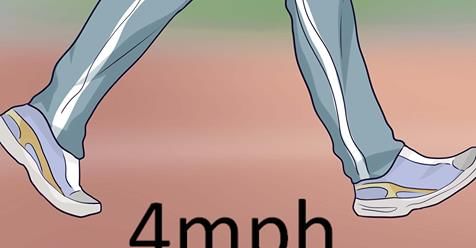How to Walk Fast And Safe?
It seems as if walking is one of the latest fitness trends – it's reported to lower your blood pressure, cholesterol, and risk of diabetes, in addition to resulting in fewer injuries than running. And the faster you do it, the more benefits you'll reap. To get your natural pace up to fitness walking levels, you'll need the right posture, the willingness to train, and 30 minutes to an hour four days a week. Are you ready?
Keep the right posture- As you walk, your chin should be up, your eyes gazing directly in front of you, your back straight, chest raised, and shoulders relaxed. It may help if you pretend you're walking in a straight line to keep your body in the correct position.
- It'll be easier to be conscious of your body if you take a minute to warm up beforehand – and it'll help prevent injury. Cool down, too, for the same reasons.
Use your arms. Your arms should be at your sides, bent at just under 90 degrees. Cup your hands gently – don't clench them – and swing them front to back, not side to side. They should be going out in front of you, not crossing.
- Using your arms will fuel your workout, too, helping you burn more calories. With more muscle groups being used, you'll get more out of your workout.
Take smaller strides. It's a common misconception that taking longer strides helps you walk faster, and on the surface, it makes sense. However, it actually slows you down. How fast can your feet touch the ground if you're taking huge strides? Not very. Take shorter, smaller, quicker steps, and you'll actually get to where you're going faster.
- Don't compromise your form to do so. You'll probably have the urge to elongate your steps (it's natural and how you likely normally walk) but resist. Keep good posture, use your arms, and your feet with fly underneath you.
Push off with your toes. You want to roll through from heel to toe when your foot hits the ground. Start with the back of your foot, and move forward, as if you're wiping gum off the bottom of your shoe. Pushing off with your toes also engages your leg and butt muscles, giving you a better workout.
- The natural spring of your calf muscles will propel your body forward, keeping your momentum. This landing is natural and how your foot craves to hit the ground – deviate from it and you risk injury.
Tighten your abs and butt. As you walk, flatten your back and tilt your pelvis (your hips) ever so slightly forward. Keeping everything tight and being conscious of your muscles gives you a more full-bodied workout and gets your entire body into gear for faster walking.
Don't think of it as "power walking." When most of us think of "power walking," we imagine people with their arms swinging about, taking wide, almost ridiculous-looking steps. That should not be what your aim is. You want to glide on the ground, not stomp carelessly all over it.
- Some professionals are beginning to coin the phrase "fitness walking." And it makes sense – a brisk walk can burn just as many calories as a run, and it's much less damaging for your muscles



+1.svg)
